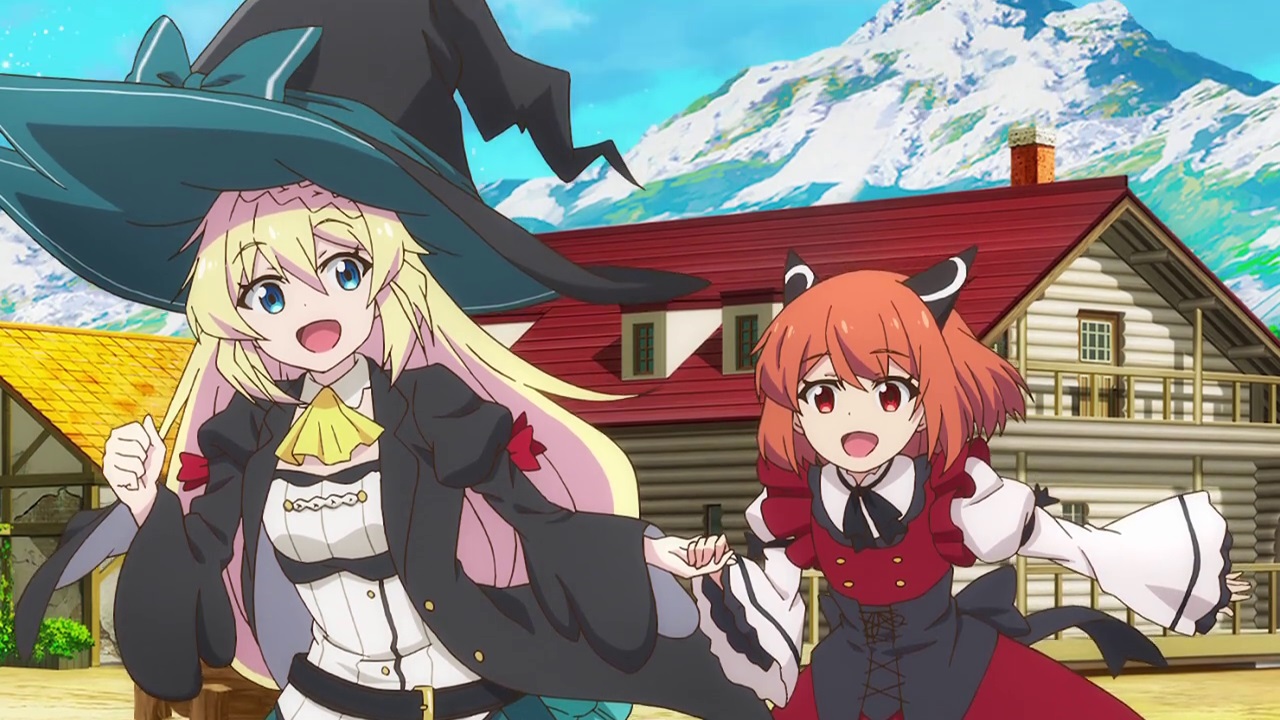Synopsis
An office worker named Azusa Aizawa dies of overwork at the age of 27. With the help of a goddess, she gets reincarnated in another world as an immortal and ageless witch, set on living a slow and relaxed life, only routinely killing a handful of weak local slime monsters to make a living. However, after doing the same routine for 300 years, Azusa has unknowingly gathered enough experience points to reach the maximum level cap. As rumour about her being the strongest witch spreads around, can Azusa continue with her easygoing lifestyle?
Comments
Halimun Muhammad (The Indonesian Anime Times)
Among the many isekai, or stories where the main character gets transported to another world, that have been adapted into anime in recent times, I’ve Been Killing Slimes for 300 Years and Maxed Out My Level belongs to the tensei or reincarnation variety. And like a number of other tensei like By the Grace of Gods (Kamitachi ni Hirowareta Otoko), for example, the cause of the main character’s death in the past life is overwork. This is not a mere excuse to get a character into a different world, but is actually fundamental to the value that the character lives by in the new life, that is to live a so called “slow life”; easy and relaxed. These kinds of narratives have been described in this video introduction to isekai from Pause and Select as an antithesis to “nekketsu” or “hot-blooded” stories, where the main characters work hard to achieve their desired goal (this is the type of story that people may usually associate with the manga of Shonen Jump).
It can be said that with the prevalence of overwork problem in Japan, these stories where the main characters live it easy casts doubt upon the merit of narratives that places overemphasis on hard work, proposing instead that it’s not worth it to work excessively to the point of sacrificing your own well being. I’ve Been Killing Slimes for 300 Years‘ heroine Azusa even says so pretty much at the end, when she talk the dragon Laika into getting a rest from the task of rebuilding her house that Laika accidentally damaged. If characters like Azusa avoid hard work, take into consideration that in their backstory, they already put so much work in their life though it gives them nothing but a sad end. Is it wrong that given a second chance at life, they’d opt to make use of it to rest from the excessive work they already done in their past life?
With that in mind, we might also consider these “slow life” stories as enabling a moment of rest for their audience, to enjoy the characters’ cozy life after spending the day working. Escapism can often be seen negatively, but is it not okay to have escapism not as permanent avoidance of reality, but as temporary breaks our body and mind deserves to have every now and then, when we can unwind ourselves by not thinking about work or life problems for a while?
I’ve Been Killing Slimes for 300 Years‘ premise does present an ironic twist to Azusa’s lifestyle, as the immortality she asked and the task of slime-hunting she picked up as a habit to make a living without having too much pressure, over a long time still left her with overwhelming powers that draw the attentions of other powerful beings. However, the situation is still lightheartedly played for comedy, maintaining the overall cozy feel of the story for the audience. Notably, the presence of male characters in this story is kept low, as the main character and all the important supporting characters have or can assume the form of beautiful girls. This is a characteristic that we may see have in common with nichijou-kei stories, which Motoko Tanaka has discussed lessen the role of male characters to avoid the complication of romantic conflicts. While it’s fair to think that there could be problematic assumptions about the relation between boys and girls and between girls in the explanation, but for the purpose of these works, the homogenous gender of the cast provides a space where the characters can just goof off together in their daily lives.
The anime adaptation itself works well in its first episode in establishing the mood of the story. The highland setting is depicted lushly and with vibrant colors and bright lighting, making it convincing as a pleasant place for Azusa to live in. The character designs look nice, while not shying away from shifting into more cartoonish style for certain comedic moments. The progression of the story is easy to follow without any confusion. And last but not least, Aoi Yuuki is so fun as Azusa, bringing to life her range of expressions, from enjoying herself, to being perplexed, to taking jabs at what other people are saying, to making deadpan comments about her situation, to being angry or being gentle. All in all, it looks promisingly a good long-awaited adaptation of this “slow life” novel series.
I’ve Been Killing Slimes for 300 Years and Maxed Out My Level is available in Indonesia on VIU and Bilibili App.
Facts and Figures
| Alternative title | Slime Taoshite 300-nen, Shiranai Uchi Level Max ni Nattemashita |
| Source material | Light novel series by Kisetsu Morita |
| Casts | Aoi Yuuki as Azusa Aizawa Azumi Waki as Flatorte Kaede Hondo as Laika Manami Numakura as Beelzebub Minami Tanaka as Shalsha Riho Sugiyama as Rosalie Sayaka Harada as Halkara Sayaka Senbongi as Falfa Yukari Tamura as Pekora |
| Director | Nobukage Kimura |
| Series composition | Tatsuya Takahashi (Chidori RSC, Ms. vampire who lives in my neighborhood, Wise Man’s Grandchild) |
| Character Design | Keisuke Goto (Fate/Grand Order: First Order, Yatterman Night) |
| Opening Song |
“Gudafuwa Everyday” by Aoi Yuuki
|
| Ending Song |
“Viewtiful Days!” by Azumi Waki
|
| Studio | REVOROOT |
| Official Site | https://slime300-anime.com |
| @slime300_PR | |
| Broadcast Date | 4 April 2021 (1200 GMT, 1900 WIT, 2100 JST) |
Screenshots and Trailer














